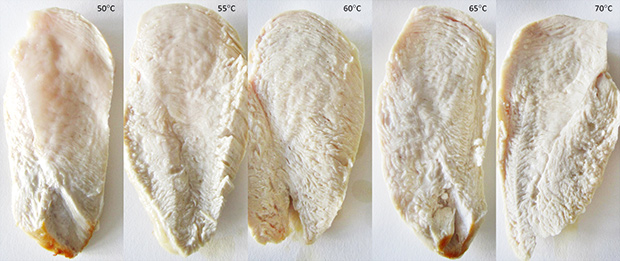Why your cooked chicken may not be done

Research into home cooking chicken shows you need to dig deeper to ensure it’s safe to eat.
Words: Nadene Hall
Ask most people to check if a chicken is cooked and you’ll get two common measures:
• the colour of the meat;
• the juices running clear.
It turns out only one of those – clear juices from the thickest part of the meat – is a good indicator that the chicken is safe to eat.
The Norwegian Institute of Food, Fisheries and Aquaculture Research surveyed almost 4000 households across France, Norway, Portugal, Romania, and the UK about their personal chicken cooking practices. They also interviewed and observed chicken cooking practices in 75 additional households in the same countries.
The analysis indicated that checking the inner colour of chicken meat is a popular way to judge doneness, used by half of households. Other common methods include examining meat texture or juice colour.
However, the researchers also conducted laboratory experiments to test various techniques for judging doneness. These showed that colour and texture are not reliable indicators of safety on their own. For example, the inner colour of chicken changes at a temperature too low to sufficiently inactivate pathogens.

Left: The meat has already turned white at 50°C, but still looks glossy and smooth. It needs to reach over 70°C to ensure pathogens are killed. Right: Properly-cooked chicken has clear juices, and a fibrous, matte texture throughout.
Food safety messages often recommend using thermometers to judge doneness, but the researchers found that the surface of chicken meat may still harbour live pathogens after the inside is cooked sufficiently.
Furthermore, thermometer use is rare; only one of the 75 observed households used one.
To ensure chicken is cooked:
• use a meat thermometer inserted into the thickest part of the meat to check it is at least 74°C;
• check the juices are clear, not pink;
• check the meat texture is fibrous throughout, not glossy.
Love this story? Subscribe now!
 This article first appeared in NZ Lifestyle Block Magazine.
This article first appeared in NZ Lifestyle Block Magazine.

